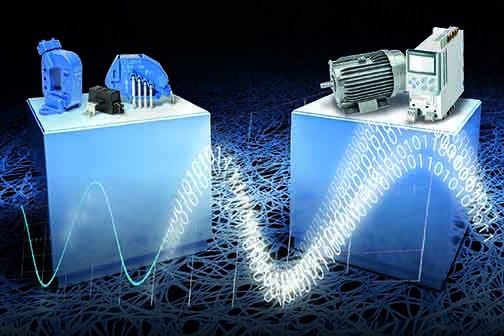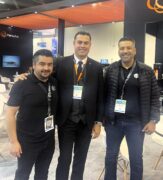Key points:
- Compact open loop Hall effect current transducers with a digital output from a sigma-delta modulator
- 12-bit effective resolution with 20kHz bandwidth
- 10MHz clock frequency
- Same footprint and precision as LEM’s successful HO and HLSR analog series
- Additional overcurrent detection output
LEM completes its range of digital output versions of HO and HLSR open-loop Hall effect current transducers with analog to digital (A/D) conversion performed by an on-board sigma-delta modulator, giving a 1-bit serial bitstream output. These new components for nominal current measurements of 16, 32, 40, 50, 80, 100, 120, 150, 200, 250 ARMS in 4 different mechanical designs (PCB and panel mounting) provide up to 12-bit resolution with 20kHz bandwidth.
They also supply various possible digital outputs. These include, the single-bit output 2 wires CMOS (with clock in or out modes), RS422 Manchester or LVDS Manchester which minimises the connections required. Or the 4 wires mode according to the LVDS or RS 422 (Clock in or out) standards. The digital output allows the user to choose the filter used on the bitstream to optimize between resolution and response time, according to the application. Digital outputs are also intrinsically immune to noise in hostile environments.
For a typical transfer function, the average bitstream density is 50% for zero primary current, and 10% or 90% for maximum currents in negative or positive directions.
With HLSR-PW models in one mode the clock is output from the sensor at 10MHz and both the clock and the data are single-ended signals with CMOS levels. Alternatively, the output may be Manchester coded on 2 pins, meeting the RS422 standard. The footprints of these sensors are the same as the analogue HLSR.
HO-NPW, HO-PW and HO-SW models can have the single-ended and Manchester modes as with the HLSR-PW models but they add 2 extra pins so both the clock and data may be differential signals that meet the RS422 and LVDS standards. Additionally, the transducer clock may be configured as an input in the range 5 – 12.5MHz to allow a single clock to be used throughout the system.
The new transducers can use a supply voltage of 5V and the operating temperature range is from -40°C to +105°C.
Several different filters may be used on a given bitstream. As an example, for a “current control loop” function: if a sinc3 filter is used with an over-sampling ratio (OSR) of 512 the effective resolution of a 150A sensor is 12-bit, and the bandwidth 5kHz.
Alternatively, for an “out of range detection” function, a sinc2 filter with an OSR of 16 would give a response time of 5.2µs from the same bitstream, but the resolution would be reduced to 6-bits.
Transducers in the HO family have additionally an Over-Current Detect (OCD) feature which measures the current level before the A/D converter. The response time of the OCD is 2us.
LEM – At the heart of power electronics
LEM is the market leader in providing innovative and high-quality solutions for measuring electrical parameters. Its core products – current and voltage transducers – are used in a broad range of applications in drives & welding, renewable energies & power supplies, traction, high precision, conventional and green cars businesses. LEM’s strategy is to exploit the intrinsic strengths of its core business, and to develop opportunities in existing and new markets with new applications. LEM is a mid-size, global company. It has production plants in Beijing (China), Geneva (Switzerland), Machida (Japan) and Sofia (Bulgaria). With its regional sales offices close to its clients’ locations, the company offers a seamless service around the globe. LEM is listed on the SIX Swiss Exchange since 1986; the company’s ticker symbol is LEHN.










